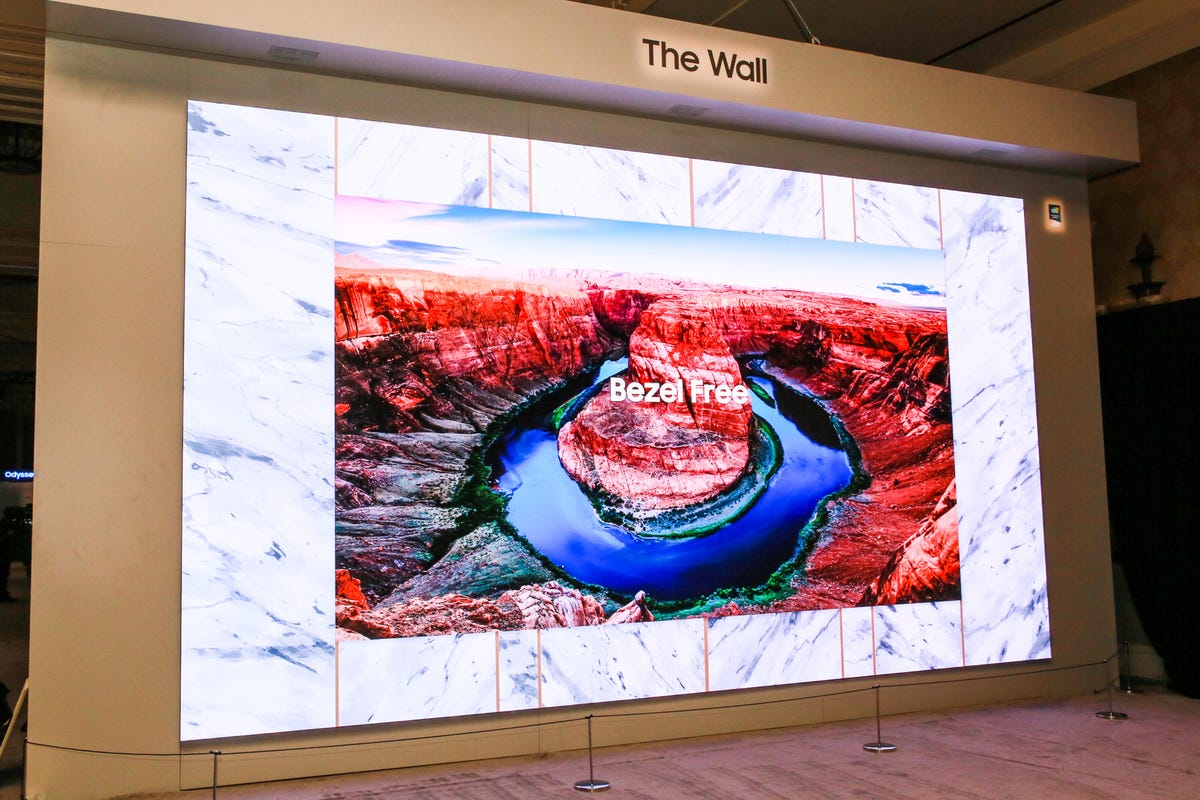A closer look at MicroLED
Up close with Samsung's The Wall and other MicroLED displays.

MicroLED can be huge
At CES 2020 here in Las Vegas, Samsung showed off a 292-inch version of its latest MicroLED TV, aptly called The Wall. MicroLED is fundamentally different from current display technologies LCD and OLED, and 2020 might be the year it goes mainstream.
Smaller is newer
The bigger news, however, is that Samsung announced it's ready to go into large-scale production on smaller MicroLED TVs, from 75 to 150 inches. Smaller MicroLED TVs are more challenging than big ones, because the LEDs need to fit closer and tighter together while still producing acceptable brightness for a TV.
Only 146 inches
Here's the first The Wall, a 146-inch model shown at CES 2018. It's actually on sale now for the commercial market. Pricing depends on how it's installed, but it's safe to say it's very, very expensive.
Modular
One benefit of MicroLED is that it's easier to make different screen sizes and aspect ratios than with traditional LCD and OLED technologies.
More modular
Another example of the modular capabilities.
Sizes and shapes
It'd be possible with MicroLED to have these different shapes and sizes all be high-resolution video displays.
Depth
Current versions are slightly thicker than other display tech, but the trade-off is an almost nonexistent bezel, giving 99% of the TV's facia to the screen itself.
Wall-sized The Wall
Although for years you've been able to get a display this size (human for scale) using a projector and screen, none could ever be as bright as MicroLED.
Modular
One of Samsung's MicroLED modules. Put a bunch together and you've got a TV.
MicroLED close-up
A close-up view of MicroLEDs making an image.
Microscopes
A comparison of an LED of a conventional TV (left) with a Samsung MicroLED (right).
LED evolution
The evolution of LEDs getting smaller and smaller. The top left is the most recent, and they get larger and older in a clockwise direction.
Sizes
An illustration of the size difference between traditional LEDs and MicroLEDs.
Check out MicroLED is the first new screen tech in a decade. Can it beat OLED? for more about how this technology works.
Originally published last year.



